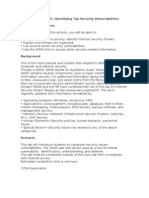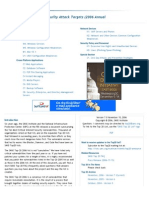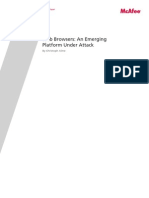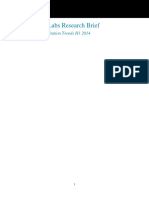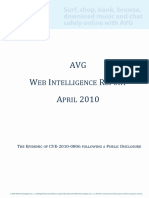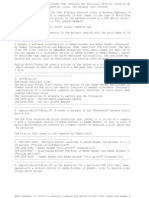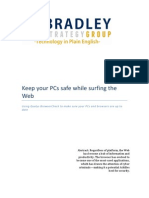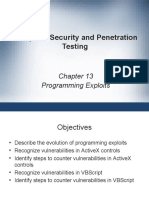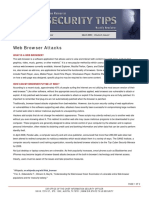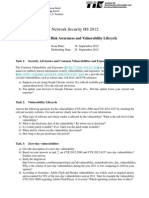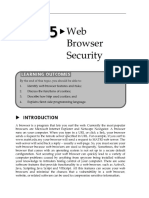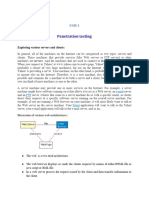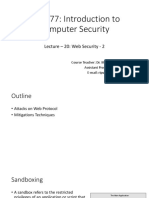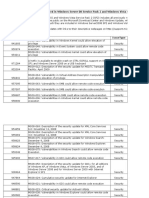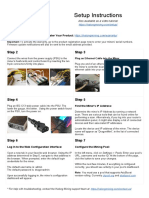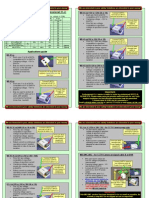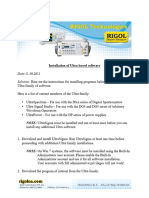0% found this document useful (0 votes)
273 views3 pagesAnswer
Here are some potential organizations to contact about explaining their vulnerability tracking and mitigation processes:
- Local computer emergency response team (CERT) or coordinated vulnerability disclosure program. These organizations are specifically focused on vulnerability coordination and may be open to educating students.
- Large technology companies like Microsoft, Cisco, or Intel that have dedicated security response teams. They may be willing to discuss their processes at a high level without disclosing sensitive details.
- Government agencies like the Department of Homeland Security or National Cybersecurity and Communications Integration Center (NCCIC). These organizations track vulnerabilities nationally but may have restrictions on what they can discuss publicly.
- Managed security service providers (MSSPs) that perform vulnerability assessments and incident response
Uploaded by
kalango002Copyright
© Attribution Non-Commercial (BY-NC)
We take content rights seriously. If you suspect this is your content, claim it here.
Available Formats
Download as DOC, PDF, TXT or read online on Scribd
0% found this document useful (0 votes)
273 views3 pagesAnswer
Here are some potential organizations to contact about explaining their vulnerability tracking and mitigation processes:
- Local computer emergency response team (CERT) or coordinated vulnerability disclosure program. These organizations are specifically focused on vulnerability coordination and may be open to educating students.
- Large technology companies like Microsoft, Cisco, or Intel that have dedicated security response teams. They may be willing to discuss their processes at a high level without disclosing sensitive details.
- Government agencies like the Department of Homeland Security or National Cybersecurity and Communications Integration Center (NCCIC). These organizations track vulnerabilities nationally but may have restrictions on what they can discuss publicly.
- Managed security service providers (MSSPs) that perform vulnerability assessments and incident response
Uploaded by
kalango002Copyright
© Attribution Non-Commercial (BY-NC)
We take content rights seriously. If you suspect this is your content, claim it here.
Available Formats
Download as DOC, PDF, TXT or read online on Scribd
/ 3
